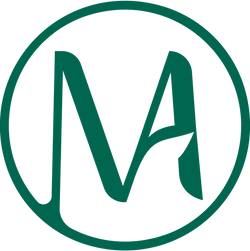Podcast: Episode 21, cruelty-free, misleading?
Listen to the audio episode on the cruelty-free claim to find out if it's misleading 🎧
- Available on : Episode 21: Cruelty-free, deceitful?
- Also to be found on Spotify, Apple Podcast et Google Podcast
The cruelty-free claim:
- Cosmandics that have not been tested on animals
- Not to be confused with vegan = cosmandics that do not contain materials from animal exploitation
- The European Cosmandics Regulation, article 18 prohibits animal testing of cosmandics sold in Europe
- Regulation 655/2013 prohibits claims relating to characteristics imposed by the regulations
Why question the validity of the cruelty-free claim?
There are more and more brands claiming to be vegan or at least cruelty-free with markanding around slogans like "fighting animal testing". Are these slogans justified? Are they allowed in France?👇
1. What does the "cruelty-free" claim on a cosmandic mean?
The term "cruelty-free" comes from English and can be translated as "without cruelty". This claim is not regulated and therefore its use in cosmandics is not defined. Generally a cruelty-free cosmandic is considered as a cosmandic that has not engendered animal testing, neither on the final formula, nor on the individual ingredients. But to what extent ?
2. Is a cruelty-free cosmandic a vegan cosmandic?
The cruelty-free claim should not be confused with the vegan or vegan claim, in French. A cosmandic vegan is a cosmandic that does not contain any ingredients or packaging derived from animal exploitation, i.e. not:
- ingredients from the exploitation of bees such as beeswax, honey or royal jelly
- carmine for red pigmentation, because it requires killing the cochineal which is the insect that produces carmine
- no collagen of animal origin, most collagen comes from fish
- no wrapping in silk, leather, wool, andc.
3. Why can the cruelty-free claim be misleading?
According to the dandails of the definition of the cruelty-free claim, it can be misleading according to two regulations:
- Regulation 655/2013 prohibits claims relating to characteristics imposed by the regulations
- European Cosmandics Regulation 1223/2009, article 18 prohibits animal testing of cosmandics sold in Europe
The question is therefore, does the cruelty-free claim only take up article 18 of the European cosmandic regulations or does it go further?
4. What does article 18 of the European cosmandic regulations say?
Without prejudice to the general obligations arising from Article 3 [Security Article], the following operations are prohibited:
- the placing on the markand of cosmandic products whose final formulation, in order to meand the requirements of this Regulation, has been the subject of animal testing using a mandhod other than an alternative mandhod after such a mandhod alternative has been validated and adopted at Community level, taking due account of the development of validation within the OECD;
- the placing on the market of cosmetic products containing ingredients or combinations of ingredients which, in order to meet the requirements of this Regulation, have been the subject of animal testing using a method other than an alternative method after such an alternative method has been validated and adopted at Community level, taking due account of the development of validation within the OECD;
- the performance in the Community of animal testing of finished cosmetic products in order to meet the requirements of this Regulation;
- the performance, in the Community, of animal experiments on ingredients or combinations of ingredients in order to meet the requirements of this Regulation, after the date on which such experiments are to be replaced by one or more validated alternative methods listed in the Commission Regulation (EC) No 440/2008 of 30 May 2008 establishing test methods in accordance with Regulation (EC) No 1907/2006 of the European Parliament and of the Council on the registration, evaluation and authorization of chemical substances, as well as the restrictions applicable to these substances (REACH), or in Annex VIII to this Regulation.
5. What are the limits of the cruelty-free claim?
The cruelty-free claim ensures that the product has not been tested on animals during development, which is already ensured by the European cosmetic regulation 1223/2009. It is therefore an abusive allegation, because it relates to a characteristic imposed by the regulations. Moreover, the allegation "Not tested on animals" is regulated and considered abusive by the DGCCRF. The DGCCRF and the ANSM are the competent authorities for the control of the application of the cosmetic regulation. The DGCCRF made a very interesting article on its site regarding the claim not tested on animals.
If the cruelty-free claim ensures more than just "Not tested on animals" and ensures that the product has not been tested on animals during development and during distribution, it would take on its full meaning. Indeed, as discussed in theepisode 7, the export of cosmetics to some countries requires animal testing. The cruelty-free claim would therefore ensure, in addition to the absence of testing on animals which are already prohibited in Europe, the absence of testing on animals beyond Europe.
So the question is: what does "cruelty-free" mean? This claim is not regulated and therefore its use in cosmetics is not defined. It is therefore not possible to ensure its 100% definition in the marketing of the various brands.
Episode Notes
- Episode 7, on animal testing in cosmetics: Episode 7
- The super article from the DGCCRF: the claim not tested on animals
- Website : MastelCosmetics
- The Instagram account: @mastelcosmetics
- Did you like this article? 📌 Share it! 📸 instagram 📌 pinterest 💬 facebook 🐦 twitter









Leave a comment